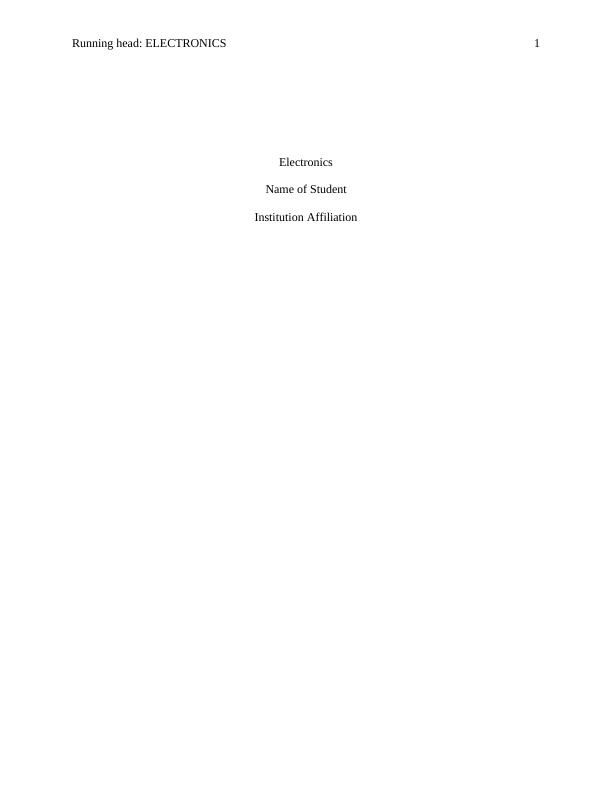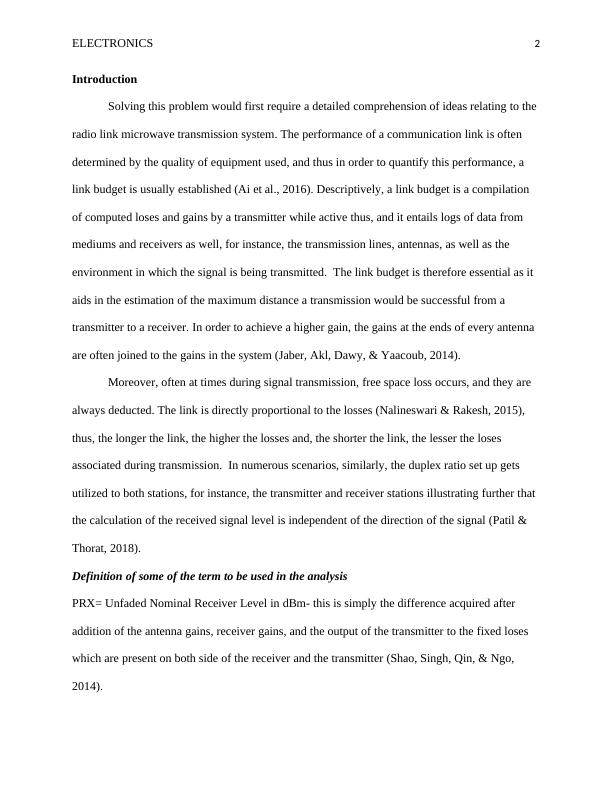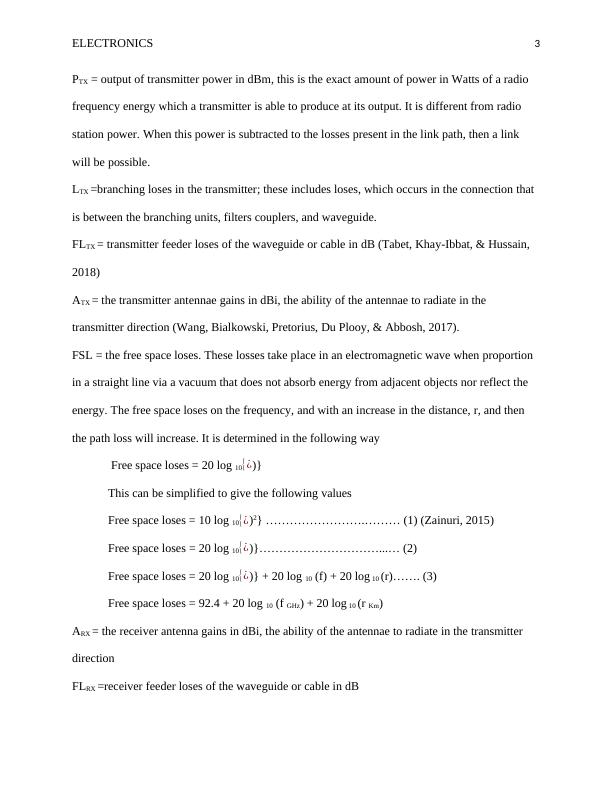Link Budget Analysis in Electronics
Calculate the nominal Receive Signal Level (RSL) at the input of the receiver in dBm assuming free space conditions. Briefly discuss the purpose of the passive repeater in this system?
9 Pages1496 Words251 Views
Added on 2023-03-31
About This Document
This document provides an overview of link budget analysis in electronics. It explains the concept and importance of link budget in determining the performance of a communication link. The document also discusses the various parameters involved in the analysis and how they affect the overall link budget.
Link Budget Analysis in Electronics
Calculate the nominal Receive Signal Level (RSL) at the input of the receiver in dBm assuming free space conditions. Briefly discuss the purpose of the passive repeater in this system?
Added on 2023-03-31
ShareRelated Documents
End of preview
Want to access all the pages? Upload your documents or become a member.
Understanding Link Budget in Radio Link Microwave Transmission System
|8
|1093
|197
Microwave Link Calculation
|7
|734
|93
DIGITAL MICROWAVE RADIO SYSTEM.
|6
|412
|489
Networking Concepts
|6
|516
|351
Purpose of passive repeaters in the microwave transmission Questions 2022
|5
|415
|2
Networking. Wireless Communication Assignment
|12
|2818
|37



